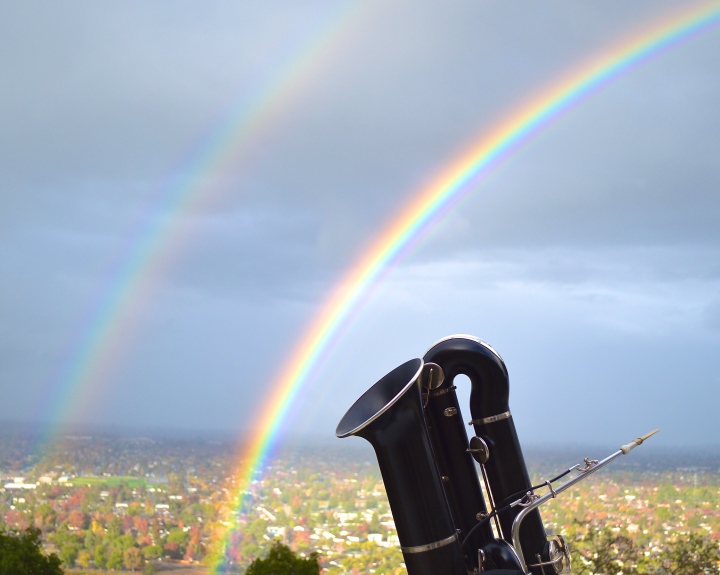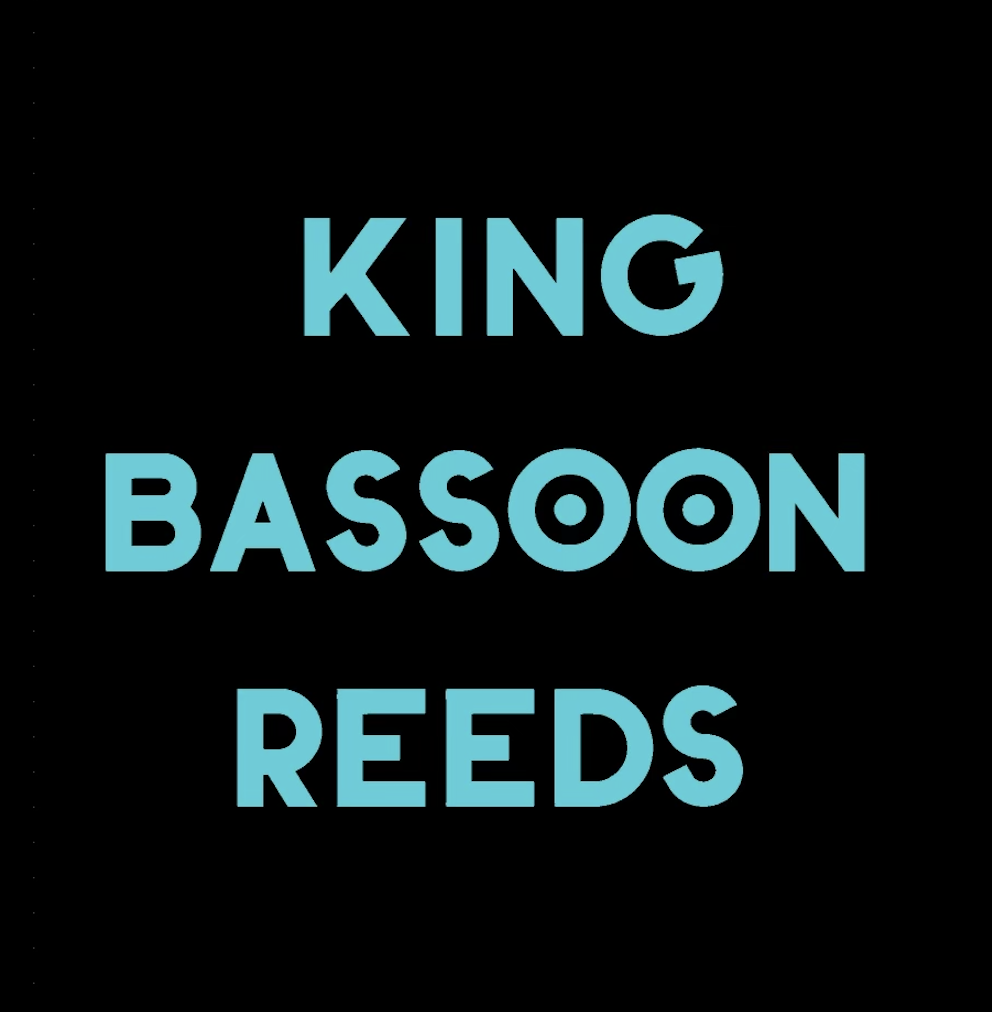December 2013 was a very important month for me because of the purchase of a Contraforte. This horn was owned by Lewis Lipnick of the National Symphony in Washington D.C. (who is an amazing person and an amazing player) When I bought it, I drove my little Prius from San Francisco to Washington DC to pick it up and drive it back. Now that I have had it for a year I think I am in a better place to talk about my experience with this instrument. My reason for writing this is the same reason for this entire website, basically consumer reports. So many cool new gadgets have been coming out in the woodwind world recently without much user reviews. When I spend money on new equipment I do research to see how it is received by players before I decide to purchase it.
Origin Story (skip this)
In my undergraduate studies at the San Francisco Conservatory I played a little contrabassoon here and there as needed but it never stuck with me. Then after graduating I went and played contra with the San Luis Obispo Symphony for a year. The symphony had an Amati contrabassoon that I was allowed to borrow and keep in my possession full time and this is when I started getting into contra. By having a contra at my house that I didn’t have to share, I put in some practice hours and messed around with reeds. I ended up really liking contrabassoon and decided to go back to the conservatory to study contra with Steve Braunstein of the San Francisco Symphony (another amazing person and amazing player) I was using the SFCM Fox contra which is in need of service and a better bocal so I was frustrated. I was looking around the used contrabassoon market all summer and fall looking for anything worthwhile, but the contra market is slow/limited, very difficult to play test without committing to buy. My thought at the time was that many people have middle range contras with the intention of upgrading sometime in the future, but I would rather just spend some money on a nice contra now and have it for the rest of my life. So I contacted a few big players all around America to see if they new of any contras for sale. Lew got back to me and said that he was selling his current Wolf Contraforte (#35 circa 2009) and replacing it with a new CF which had a few updated acoustics.
January-March
For the last year or so I had been playing contrabassoon for at least an hour a day so I was used to the fingerings, air pressure, and reeds. I am the kind of person who takes a while to adjust to new instruments, even to the point that play testing instruments for a few minutes is a waste on me. So when I first had the Contraforte I really didn’t like it. I was able to play low notes slowly and sort of go through the fingering chart and play the full range. There were huge problems immediately; I was very sharp, I only had one reed, and I could only play forte and louder. I new that the contraforte needed reeds that were larger than the contrabassoon but I didn’t realize that I needed special machines. So I was going to be completely reliant on Hank Skolnick to make all of my reeds for me. I decided within the first month of having the CF that I needed to have my own gouger and profiler if I was going to make this instrument play correctly for me. So with a little student loan money and the help of Steve B and Chris van Os I got a pair of machines. I tried all sorts of dimensions and shapes but 160mm cane with the Reiger contraforte shaper was always the best result, and still what I use. I should mention that the CF comes with an adaptor to fit regular contrabassoon reeds but middle F# cracks nonstop and so does tenor Db. I read somewhere that they also can make a bocal which is slightly longer and fit a regular contrabassoon reed, which might be better than the adaptor (which creates a dramatic flare in the bore right at the beginning) The CF does not have a tuning slide and is built closer to 442 than 440. Compared to a CB this is strange, but similar to bassoon you just learn to make a reed that plays in tune since there are no moving parts for tuning. I was at this time very primitive in the reed stuff and experimenting with the gouge, profile, thick/thin rails, think/thin heart, think/thin tip. Each reed in the reed case was individual and I wasn’t able to duplicate the same reed, the tones possible with those reeds ranged from distant muted tuba to amplified chainsaw.
April-June
I needed to have a recital to graduate and I had been spending way too much time on contra and not enough on bassoon. So I put a contraforte show together with the Mozart oboe concerto, a Mignone Waltz and Sonatina d’Amore which is a contrabassoon duet. The contraforte played great despite a few operator errors, and was received very well. I was experimenting with narrower shapes at this point using a Rieger K1 with 160mm cane. This created a simpler reedier sound a lot like a contrabassoon. The SFCM orchestra was playing Don Juan, the big oboe solo in the middle is accompanied by a drone low G in the contra. At the time, this narrower shape was the only way that I was able to play quiet enough. I always had a few of these narrower reeds in my reed case, the issue was that the internal volume of the reed was not enough for the entire range of the instrument. It seemed that I could make a reed with a resonant low register but too thin in the higher register; or a high note reed that was sharp in the low register.
July-September
Over the summer I bought a few more gadgets, with the help of Trent at Midwest Musical Imports. I bought the contraforte stand and gigbag from Wolf. The stand is huge asset, since the horn doesn’t come apart it isn’t possible to clean it out very much. Leaving it out on the stand is essential so that it is able to dry out. For reeds I was completely on the Rieger C2 which is the contraforte shape, this is the shape I have used full time since. The San Francisco Opera was auditioning utility bassoon and contrabassoon and I took the audition along with everyone else from the Bay Area. It seems like the CF is something that people invest in after they hold a contra position, so not many contrafortes have been in auditions. I played alright but nothing special and I didn’t pass into the finals. This was a good hurdle for me to audition on a new horn and it made me more comfortable playing in public. The end of the summer was mostly playing contra duets with people, not so much to show the instrument but to work on blending with other contras and finish sorting out pitch issues.
October-December
Recently I have been continuing my quest for stealing repertoire from other instruments. The range of the contraforte allows me to borrow cello music and the quick response lets me play high woodwind pieces. My last recital had the Brahms Cello Sonata no.1, the Hindemith english horn Sonata, and Syrinx. The contraforte performs great with piano, since I didn’t change the piano parts some of the voicing clashes with the range of the contra. However the tone of the CF is still clear over the piano. I have settled on a reed design which uses the wider reed shaper, Rieger C2, and I leave the blade quite thick. I clean up the collar area and even out the tip but the profiler from Chris van Os is adjusted in such a way that I need to do very little. Having a heavier tip creates a darker sound with easy high notes and the reed doesn’t warp as much in humidity/temperature changes.




Great Review!!!
I was really curious about Contraforte and your post can imagine how you pass thru.
I really want to hear live how it really sounds
Thanks a lot
Dear Chris,
I saw some where that recently you had brought a Heckel contra bassoon. How do you now feel about the choice of CF or CB please?
Thank you for all the you tube contributions – very useful to many in the community.
Chris Muris
Hello Chris, yes I did get a Heckel contrabassoon this fall. This is good inspiration for a future post but in general terms either instrument is suitable to cover the entire repertoire. For some rep. I appreciate the dry simple quality of CB. Also it’s great for the ugly or cartoony pieces. The CF is accurate and stable but has less character. It really blends with other instruments well and can project when I need to. The CF is not user friendly, I find that it take more more physical work to operate the keywork and cane/reeds are not largely available yet.
Many thanks Chris for such a swift response.